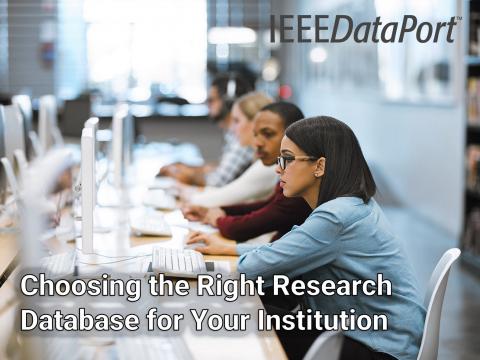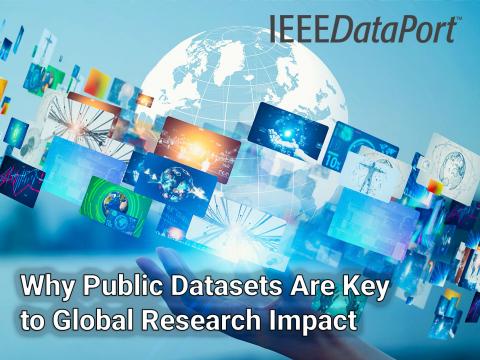How Research Data Management & Privacy Are Connected
Every day, academic institutions generate massive amounts of research data. From sensitive medical trials to confidential survey responses, this data tsunami brings both opportunities and risks. As a research administrator, you know that protecting this information isn't just good practice – it's essential for maintaining trust and compliance.
Think of Research Data Management (RDM) as your institution's digital vault. It's not just about storing data but protecting valuable research assets while keeping them accessible to the right people. With proper tools to manage data, institutions can maintain the delicate balance between sharing knowledge and safeguarding sensitive information.
A solid data management strategy does more than organize files – it creates a secure framework for handling sensitive research information. This framework becomes increasingly crucial as privacy regulations tighten and cyber threats evolve. Whether you're dealing with personal health information or proprietary research findings, the connection between RDM and privacy cannot be ignored.
This article will explore how RDM and privacy protect your institution's research assets. You'll discover practical approaches to enhance data security without sacrificing research accessibility. We'll also examine best practices that help institutions maintain compliance while fostering collaboration and innovation.
Join us as we unpack the vital relationship between research data management and privacy in today's data-driven academic landscape.
Understanding Research Data Management (RDM)
Research Data Management (RDM) is like having a well-organized digital library for your research. It covers how you collect, organize, store, and document research data throughout your project and after it ends. The complete system helps researchers handle their data smartly and safely.
Modern academic institutions rely on RDM for several key reasons:
1. Research Quality
Keeps data organized and easy to find
Prevents data loss or mix-ups
Makes it easier to spot errors early
Helps prove research findings are solid
2. Data Sharing and Impact
Makes sharing data with other researchers simpler
Helps more people use and build on your research
Increases the visibility of research findings
Supports collaboration between institutions
3. Compliance and Security
Meets funding requirements for data management
Protects sensitive research information
Ensures data privacy rules are followed
Keeps track of who can access what data
To make RDM work well, institutions need three main things:
Strong data management services that support researchers
Staff with good data management skills
Reliable data management products and tools
RDM helps prevent common research problems like:
Lost or corrupted data
Confusion about data versions
Difficulty sharing findings
Problems proving research results
When done right, RDM makes research stronger by:
Making methods clear and easy to follow
Keeping data safe for future use
Making it easier to check and repeat studies
Building trust in research findings
Think of RDM as your research insurance policy – it protects your work while making it more valuable to the scientific community.
The Growing Importance of Data Privacy in Academic Research
As a data admin overseeing research projects, you know that protecting sensitive information has never been more crucial. Today's academic research faces complex privacy challenges that require robust tools for data management and careful attention to security protocols.
Common Privacy Concerns in Academic Research:
1. Data Security Threats
Increasing cyberattacks targeting research institutions
Unauthorized access to sensitive research data
Risk of data corruption or loss
Insider threats from within organizations
2. Compliance Challenges
Meeting GDPR requirements for EU research participants
Following HIPAA rules for health-related studies
Adhering to FERPA regulations for student data
Complying with the Common Rule for human subject research
When privacy breaches occur, the consequences can be severe:
Damaged institutional reputation
Loss of research funding opportunities
Legal penalties and fines
Compromised research validity
Broken trust with research participants
Modern data management technology helps address these challenges by:
Creating secure access controls
Tracking who views and uses data
Encrypting sensitive information
Maintaining detailed audit trails
Enabling quick response to potential breaches
For research institutions like yours, staying ahead of privacy concerns means:
Regular privacy impact assessments
Updated security protocols
Ongoing staff training
Clear data handling procedures
Regular system audits
Remember: Strong privacy protection isn't just about following rules - it's about maintaining trust in academic research. When research participants trust your institution's privacy measures, they're more likely to participate in future studies and share accurate information.
The key is finding the right balance between data accessibility for legitimate research needs and robust privacy protection. This balance ensures your institution can continue producing valuable research while maintaining the highest standards of data protection.
Balancing Data Accessibility with Privacy: Key Challenges
Finding the sweet spot between sharing research data and protecting privacy is like walking a tightrope. Modern data management tools can help strike this balance, but institutions face several vital hurdles. Explore how research organizations can navigate these challenges while maintaining openness and security.
Openness vs. Privacy
Academic institutions today face a growing dilemma: how to meet open-access requirements while protecting sensitive information.
Key considerations include:
Meeting funding agency requirements for open access
Protecting confidential research information
Maintaining competitive advantage
Ensuring regulatory compliance
Modern database management software can help by:
Creating controlled access levels
Tracking data usage
Managing user permissions
Documenting access history
Data Sensitivity
Managing sensitive research data requires extra care and attention. Using the right dataset management tool is crucial for protecting:
1. Personal Information
Patient health records
Student data
Survey responses
Demographic information
2. Proprietary Research
Unpublished findings
Patent-pending discoveries
Industry partnerships
Competitive research
3. Institutional Assets
Internal protocols
Research methodologies
Preliminary findings
Collaborative agreements
Resource Limitations
Many institutions need more resources when implementing robust privacy measures. Common challenges include:
Financial Constraints
High costs of secure database management system software
Limited IT budget allocation
Expensive training requirements
Ongoing maintenance costs
Personnel Limitations
Shortage of trained data security staff
Limited expertise in privacy regulations
Need for continuous training
High turnover in technical positions
Infrastructure Challenges
Outdated technology systems
Limited storage capacity
Insufficient backup systems
Inadequate security measures
The Interconnection Between Research Data Management and Privacy
Think of Research Data Management (RDM) and privacy as two sides of the same coin. While many primarily see dataset management tools as organization systems, they're powerful privacy guardians. Let's explore how RDM and privacy protect valuable research data.
Key Ways RDM Supports Privacy:
1. Built-in Security Features
The best data management software includes:
Automatic data encryption
User authentication systems
Access level controls
Activity monitoring
Secure backup systems
2. Organized Data Protection
RDM helps protect privacy by:
Tracking who can access what data
Marking sensitive information clearly
Creating clear data handling rules
Making it easier to spot unauthorized access
Maintaining detailed audit trails
3. Risk Management
Modern data management tools help reduce risks through:
Regular security checks
Automated breach detection
Quick response to security issues
Secure data sharing options
Protected backup systems
4. Compliance Support
RDM helps institutions:
Meet privacy regulations
Document data handling
Prove compliance
Respond to audits quickly
Track privacy training
5. Better Control
Strong RDM practices enable:
Granular access controls
Clear data ownership
Secure collaboration
Protected data sharing
Easy privacy updates
The connection between RDM and privacy isn't just technical - it's practical. When researchers know where their data is and who has access to it, they can better protect sensitive information. Good RDM practices make it easier to:
Spot potential privacy risks
Respond to security threats
Update privacy controls
Train team members
Maintain security standards
Remember: Every privacy measure is only as good as the system managing it. That's why choosing the right RDM solution is crucial for maintaining data organization and privacy protection.
Best Practices for Balancing Accessibility and Privacy in Research Data Management
Following data management best practices helps research institutions strike the perfect balance between sharing knowledge and protecting sensitive information. These proven strategies make it easier to maintain security while keeping data accessible to authorized users. Let's explore the essential practices that make this possible.
Implement Access Controls
Modern database management systems offer sophisticated access controls that help protect sensitive research data. Here's how to implement them effectively:
Key Access Control Features:
Role-based permissions
Multi-factor authentication
Time-limited access
Geographic restrictions
Activity logging
For research institutions, this means:
Creating clear user roles (admin, researcher, student)
Setting specific access levels for each role
Limiting sensitive data exposure
Tracking who accesses what
Regular permission reviews
Use Data Anonymization Techniques
A strong data management strategy must include robust anonymization practices. This process removes or encrypts identifying information while preserving valuable research data.
Effective anonymization includes:
Removing personal identifiers
Masking sensitive details
Using pseudonyms
Aggregating data points
Creating synthetic datasets
Benefits include:
Protected participant privacy
Easier data sharing
Reduced privacy risks
Better compliance
Enhanced research value
Perform Regular Audits and Monitoring
Institutions can track and review data usage patterns using modern data management technology. Regular audits help:
1. Security Checks
Identify unusual access patterns
Spot potential breaches
Review security measures
Test system vulnerabilities
2. Compliance Monitoring
Track privacy requirements
Document data handling
Maintain audit trails
Verify security controls
3. System Performance
Check access speeds
Monitor storage usage
Review backup systems
Test recovery procedures
Develop Comprehensive Data Management Policies
Clear policies help everyone understand how to use tools to manage data correctly. Key policy elements should include:
Essential Policy Components:
Data classification guidelines
Storage requirements
Sharing protocols
Security measures
Privacy protection steps
Policy Benefits:
Consistent data handling
Clear responsibilities
Better compliance
Reduced risks
Easier training
Educate Researchers on Privacy Best Practices
Regular data management training helps researchers protect sensitive information while maintaining accessibility. Training should cover:
Key Training Areas:
Privacy regulations
Security protocols
Data handling procedures
Tool usage
Incident reporting
Training Benefits:
Better data protection
Fewer mistakes
Increased compliance
Improved efficiency
Enhanced collaboration
Regular training ensures everyone understands their role in protecting research data while making it accessible to authorized users.
Prioritize Research Data Management for Enhanced Privacy
Research institutions today handle more sensitive data than ever before. From student records to groundbreaking discoveries, protecting this information while sharing it safely is crucial for success.
Many data management companies offer ways to handle research data, but finding the right approach isn't simple. Research teams face real challenges:
Strict privacy rules
Budget limits
Security threats
Growing data needs
The solution? Choose research databases that make data protection simple. IEEE DataPort offers:
Strong security features
Easy sharing controls
Clear privacy settings
Flexible storage options
Your research data is too valuable to risk. Why not use tools designed specifically for research protection and sharing? IEEE DataPort helps institutions manage their data with confidence.
Ready to strengthen your research data security? Visit IEEE DataPort today.
Learn how we can protect your important research. We also make it available to those who need it. Let's build a stronger, more secure research future together.
- 193 reads



